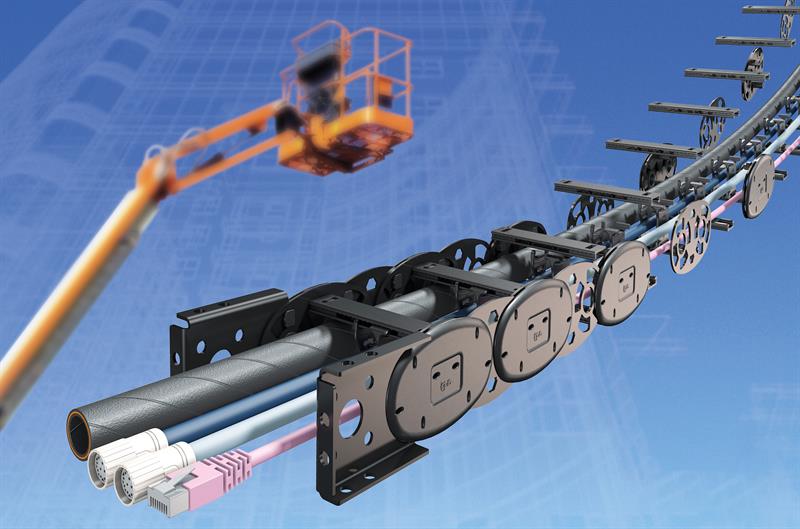Which is why Advanced Witness Systems Ltd (AWS) sought to design just such a machine. The design project, which took only 18 months to complete, enables AWS to offer calibration accredited laboratories and large OEMs the most advanced and truly universal torque wrench calibration machine in the world.
Based in Banbury, Oxfordshire, AWS is a designer of torque transducers, instrumentation control systems, calibration apparatus and certification software programs. Its pedigree traces back more than 40 years to managing director Ron Sangster who has been involved in developing national and international torque standards as well as national standard calibration machines. While consulting for the National Physical Laboratory he designed the Master 2kNm Torque Calibration Machine, which has been proven to be one of the most accurate torque calibration machines in the world.
Sangster’s aim therefore was to develop a truly universal machine, able to meet the ISO6789:2017 manual torque tool standard, that would be able to guarantee the absolute and consistent accuracy of any torque wrench, be it a tool for use with bone screws used in prosthetic surgery, a click torque wrench for tightening a car’s wheel nuts or a torque wrench used for aviation, construction and heavy machinery assembly. He also wanted the machine to operate quietly and require as little maintenance as possible. “Technicians appreciate using quiet equipment in their labs, unwanted background noise can be annoying,” he explains. “They also do not want to have to regularly maintain their equipment – long life and high reliability are therefore other key criteria.”
During this development process, AWS turned to igus for its low friction plain bearing, drylin linear drives and cable management systems. On searching the market for low maintenance and low friction bushings and bearings, linear drive systems and cable management systems, designers at AWS contacted igus. “We received a high level of technical support from igus, as well as many samples from the igus iglidur bearing, drylin E linear drives and e-chain ranges, to realise the initial design concept for the machine,” adds Sangster.
He explains that initially the focus was to accommodate torque wrenches requiring forces up to 50kg applied to the handle, but during the 18-month design project discovered ones that required a mammoth 110kg force. “We needed to beef up the machine dramatically, the original drives could not cope and there was too much friction on the bearings. To overcome these issues, we worked with igus adding in a gearbox, larger linear crosstrack and modifying the bearings.”

The result is the AWS Universal Torque Wrench Calibration Machine (UTWCM), which provides an efficient and cost-effective means of calibrating and testing manually operated torque wrenches to international or company specific standards and specifications. It is designed to calibrate and test wrenches up to 2,500 Nm and equivalents. The benefit of using the machine is that it removes the need for operators to manually apply, at the right speeds, high forces when calibrating large torque wrenches. Instead, the machine applies the force using AWS proprietary firmware, a stepper motor and linear guide system.
Available with either semi- or fully-automated operation, the UTWCM applies the force to the tool via a linear carriage stepper motor and a proprietary microcontroller. This set-up assists in minimising the parasitic forces applied to the torque wrench handle. The machine can be used with the latest AWS Kepler software, Kepler 4, to speed up completion of the calibration and certification process to comply with ISO 6789:2017, ISO 6789:2003 or type approval requirements for manufacturers.
“This calibration software was developed 15 years ago and has been used by a number of large and small manufacturers and laboratories. Early users were Danish, so we named it Kepler in tribute to the 17th-century German astronomer, mathematician and astrologer, Johannes Kepler,” says Sangster. “The software runs on a standalone PC to ensure it is not compromised and data cannot be corrupted and can be backed-up using the user’s in-house IT server system.”
The fully-automated UTWCM uses AWS Intelligent Inline Torque Transducers (IITTs) and the AWS Professional Transducer Display (PTD) to provide feedback to the microcontroller, automatically detecting a first peak signal for setting type wrenches, stopping the machine and returning to zero, greatly speeding up the calibration process and reducing operator input. With indicating wrenches, the operator stops the machine when the torque wrench displays the target torque. An optional Transducer Switch Box keeps AWS IITTs powered up continually, allowing quick changeover between transducers. The semi-automatic version relies on the operator to instruct the machine as to when 80% of the target torque has been reached, so that the machine slows to the correct rate, and to stop the machine when the target torque is reached.
The built-in microcontroller controls the accuracy of the load applied and operation speeds of which there are four settings for different ranges of tools. This ensures the adherence to the minimum target torque approach times, complying to the ISO standard, for the capacity of wrench being calibrated. Multiple safety features ensure that the machine, transducers and torque wrench are not overloaded in operation or over driven due to a wrench fault.
Parasitic forces acting on the wrench during calibration are reduced by design feature and easy to adjust force balancer systems to counterbalance the weight of a torque wrench handle. Multiple or single transducer cassette variations for different transducer manufacturers are available or built to suit customer requirements. “To accommodate wrenches with fixed heads, the transducer mounts in our carriages can be rotated 360° in steps of 30°,” adds Sangster.
Since the launch of UTWCM, the company has sold all that it has built so far, with new orders coming in quickly. Calibration accredited laboratories and large OEMs in various sectors, including aerospace and defence, subsea, transportation, power generation, production plants and processes, around the world are discovering the value of using a truly universal machine. The benefits of the UTWCM being automated, reliable, maintenance-free, quick and easy to use, energy efficient and quiet are proving highly desirable.











